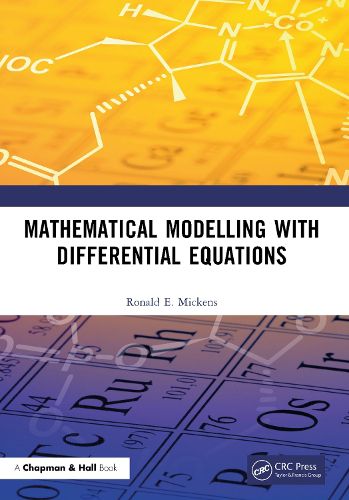Readings Newsletter
Become a Readings Member to make your shopping experience even easier.
Sign in or sign up for free!
You’re not far away from qualifying for FREE standard shipping within Australia
You’ve qualified for FREE standard shipping within Australia
The cart is loading…






Mathematical Modelling with Differential Equations aims to introduce various strategies for modelling systems using differential equations. Some of these methodologies are elementary and quite direct to comprehend and apply while others are complex in nature and require thoughtful, deep contemplation. Many topics discussed in the chapter do not appear in any of the standard textbooks and this provides users an opportunity to consider a more general set of interesting systems that can be modelled. For example, the book investigates the evolution of a "toy universe," discusses why "alternate futures" exists in classical physics, constructs approximate solutions to the famous Thomas-Fermi equation using only algebra and elementary calculus, and examines the importance of "truly nonlinear" and oscillating systems.
Features
Introduces, defines, and illustrates the concept of "dynamic consistency" as the foundation of modelling. Can be used as the basis of an upper-level undergraduate course on general procedures for mathematical modelling using differential equations. Discusses the issue of dimensional analysis and continually demonstrates its value for both the construction and analysis of mathematical modelling.
$9.00 standard shipping within Australia
FREE standard shipping within Australia for orders over $100.00
Express & International shipping calculated at checkout
Mathematical Modelling with Differential Equations aims to introduce various strategies for modelling systems using differential equations. Some of these methodologies are elementary and quite direct to comprehend and apply while others are complex in nature and require thoughtful, deep contemplation. Many topics discussed in the chapter do not appear in any of the standard textbooks and this provides users an opportunity to consider a more general set of interesting systems that can be modelled. For example, the book investigates the evolution of a "toy universe," discusses why "alternate futures" exists in classical physics, constructs approximate solutions to the famous Thomas-Fermi equation using only algebra and elementary calculus, and examines the importance of "truly nonlinear" and oscillating systems.
Features
Introduces, defines, and illustrates the concept of "dynamic consistency" as the foundation of modelling. Can be used as the basis of an upper-level undergraduate course on general procedures for mathematical modelling using differential equations. Discusses the issue of dimensional analysis and continually demonstrates its value for both the construction and analysis of mathematical modelling.